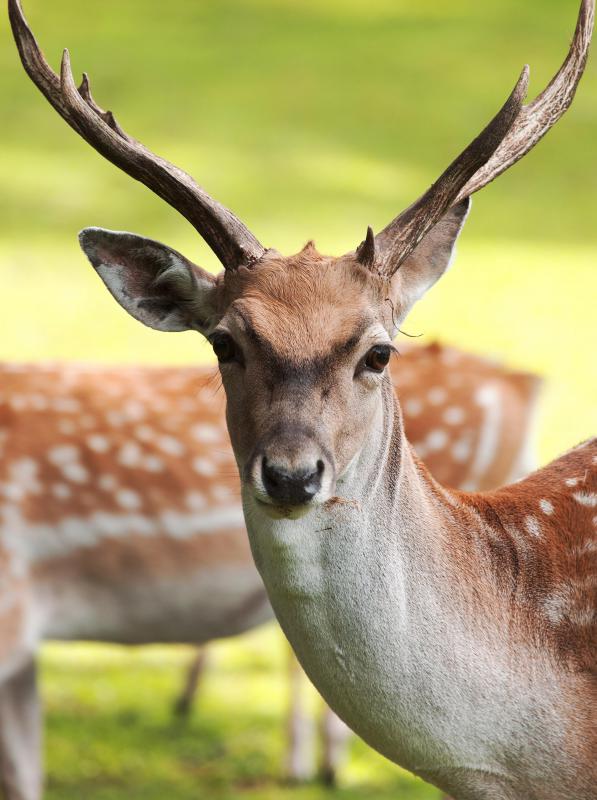At HomeQuestionsAnswered, we're committed to delivering accurate, trustworthy information. Our expert-authored content is rigorously fact-checked and sourced from credible authorities. Discover how we uphold the highest standards in providing you with reliable knowledge.
What is Bluestem Grass?
Bluestem grass refers to a variety of grasses native to North America in general and native to the Great Plains specifically. These plants have many uses, including for grazing by large livestock, for landscaping and for erosion control. The Chippewa Indians have used bluestem grass for cooking, housing and for medicinal purposes. The three variations of bluestem grass are big bluestem, little bluestem and sand bluestem.
Big bluestem, or Andropogon gerardii, also is known as turkey foot, because the seed heads stick outward, resembling a turkey's foot. As the tallest of the grasses, it can grow as high as 10 feet (3 m), with seed heads that change color from bronze to purple to green with blue-green stems. The blades grow up to 12 inches (30.5 cm) in length, with leaves that develop a red tinge and turn bronze in the fall. It is partial to loamy soil, which is soil made up of equal parts of sand, silt and clay, and the plant tends to have dense growth with deep roots that help keep the prairie wind from blowing away all of the dirt around the plant. This native grass is found in North America from southern Canada south to Florida and Mexico and west to Montana.

Sand bluestem, or Andropogon hallii, is a bit smaller than the big bluestem, and it grows to a height of about 7 feet (2.1 m). It has horizontal stems of 4-8 inches (10.2-20.3 cm), with a stem base shaped like the letter J. The seed heads tend to stick out in groups of three, giving the appearance of a turkey foot, as does the big bluestem. Sand bluestem grows in sandy soils, or soils of both sand and loam, throughout the midwestern United States and Great Plains region.
Little bluestem, or Schizachyrium scoparium, is the smallest of the three varieties and grows to a maximum of 3 feet (0.9 m) tall. It is green with some purple at the base of the stem. The seed heads are located in a hair cluster, about 3 inches (7.6 cm) long. Little bluestem grows in a variety of soils and, as such, is the most distributed native grass in North America.
All three varieties of bluestem grass have similar uses. They are used to stabilize various soils and protect from erosion caused by the wind. Livestock such as deer and elk graze on the grasses, and song and game birds eat the seeds. Bluestem grass provides high-quality foraging grass for different classes of livestock and is used for hay. The grasses also are used as ornamental flowers and borders in flower gardens.
AS FEATURED ON:
AS FEATURED ON:











Discussion Comments
Sometimes bluestem grass is used as hay for horses. I got my horse a bag once but didn't buy it again because he refused to eat it. I'm not sure which type of bluestem grass it was though. I also found out later that if bluestem grass is harvested too late, it can't be used as hay because it becomes too difficult for the animal to digest. So maybe it was the grass I bought that was problematic. I might give bluestem grass a try again in the future as hay, but I will definitely buy from a different seller.
@burcinc-- Yes, I have little bluestem grass along with several other types of grasses in my yard for ornamental purposes. The bluestem has worked fine, I grew them from seeds. They have a slightly pinkish hue when they grow.
Depending on your soil, little bluestem may or may not do well. My advice would be to plant several different types of grasses to see which do better and look better. If you grow them from seeds, it won't be expensive. Aside from bluestem grass, I also love sideoats grass which is also easy to grow and looks nice.
Is anyone here using bluestem grasses for ornamental purposes, specifically little bluestem? Has it worked well for you?
Post your comments